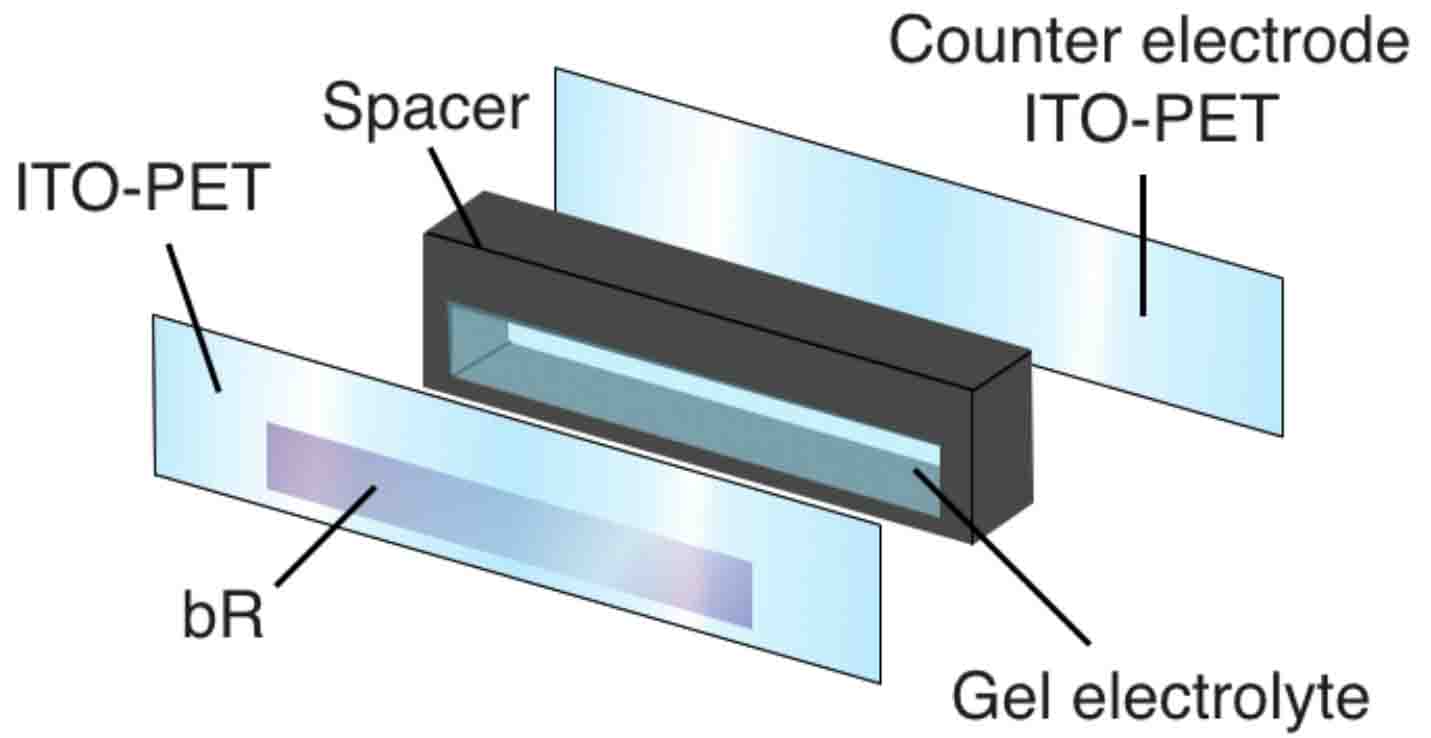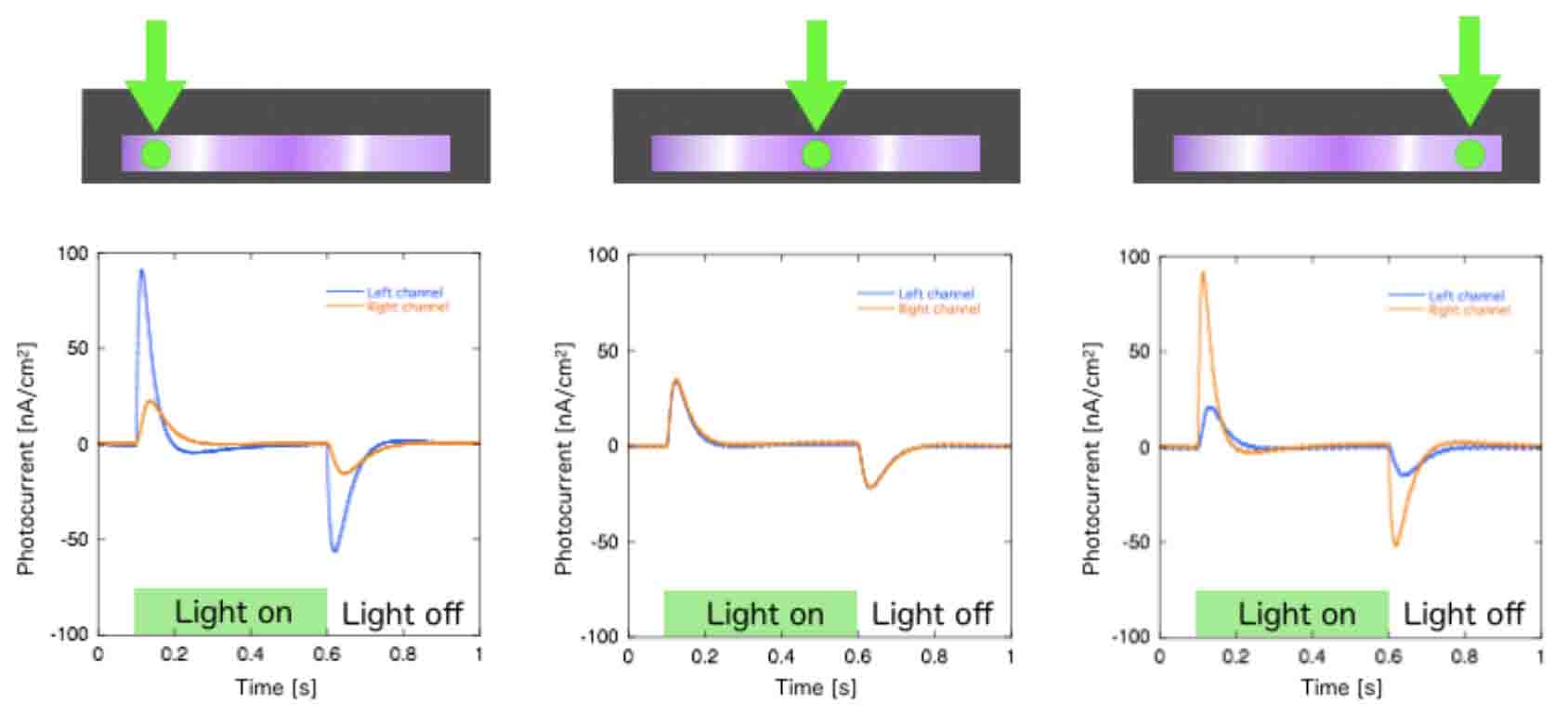Large size position sensitive detectors
Position Sensitive Detector (PSDs) is a non-divided position sensors that detects the center of the spot light. In general, PSDs made of semiconductors have a structure in which a uniform resistive layer is formed on the surface of a PIN photodiode and output electrodes are provided at both ends of the resistive layer. When light enters the light-receiving part, electric charge is generated at that position. The charge (current) that reaches the resistive layer is divided in inverse proportion to the distance to the output electrodes at both ends, and extracted from the output electrodes. Here, a large-area PSD is fabricated using bacteriorhodopsin bR, which can be formed by a wet process, as a photoelectric conversion material.
Figure 1 shows the structure of bR-PSD in which deposited bR film on ITO-PET is replaced by the resistance layer of semiconductor PSD. Figure 2 shows the photocurrent response obtained from the left and right changes according to the incident position.


Figure1 Figure 2